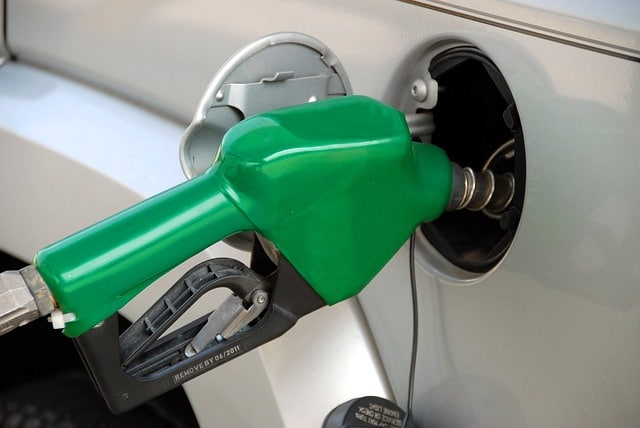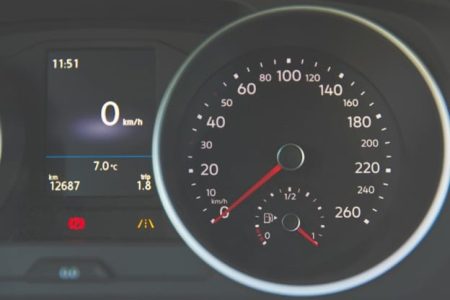- 021 928 8182

As petrol costs rise, one core question burns: how can we make our car’s fuel stretch further? Auto Online explores options.
Understanding fuel efficiency can seem daunting but, at its core, it’s simple.
After all, what is fuel? A liquid smoothie of chemical potential energy. What is an engine? A tool made to turn that energy from a chemical form into a kinetic one. In other words, it turns fuel into motion.
However, motion isn’t the only energy an engine produces. Heat energy and sound energy are common byproducts—an engine operating efficiently will produce as little of both as possible. After all, energy wasted on making a loud sound is energy that isn’t going into making your car move.
This is why a car going at a steady pace empties its tank slower than one going at full tilt, even when they’re covering the exact same distance: covering 500 miles at a constant velocity wastes less fuel on heat and noise compared to someone covering those same 500 miles like a bat out of hell.
Of course, this is assuming that you’re using the same car, fuel, and even road each time! The number of miles you can cover on a single gallon of fuel isn’t set in stone, but depends on all sorts of factors. And a good thing, too: not many people would be happy driving slower forever!
So, let’s see how else you can save fuel in this economy.
Fuel Types

First, let’s get the low-hanging fruit out the way: yes, diesel is generally better from a fuel-efficiency standpoint. Although standard diesel is infamous for being environmentally unfriendly, even compared to gasoline, there are diesel variants with a smaller footprint, making it viable to use this fuel without drastically worsening air pollution.
Next, gasoline: the bread and butter of cars worldwide. This is your standard unleaded petrol. If you drive a car and aren’t sure what fuel it uses, it’s probably this. Both newer drivers and petrol heads love gasoline for the performance and acceleration it allows in compatible engines (we’d never recommend deliberately putting petrol in a diesel engine, or vice versa).
- So long as you can put up with the long recharge times, are happy with the short operational range, and have a way to recharge at all, cars that run solely on electricity are very cost-efficient in terms of “fuel” usage. It’s just too bad you’d be buying one in a country with lots of loadshedding and very few charging points.
- Touted several years ago as the fuel of the future, it’s also about twice as fuel-efficient as gasoline or diesel. While not as efficient as running on an electric engine, hydrogen avoids many of the shortfalls associated with electricity. That is, if you can get your hands on it: even in even in fully developed countries, resupply points for hydrogen are uncommon.
So, unless you (or can find) a good hybrid car, you’ll likely be using petrol or diesel. Of the two, diesel is the more efficient choice.
Calculating Mpg
But wait! Don’t just beeline for the nearest diesel you can find! A good question to ask before any car purchase is, “How many miles will I get per gallon (mpg)?” or, “How many kilometers will I get per litre (km/l)?” Car manufacturers and dealers collect averages of this data, which you can then look up.
If you don’t know what your current car’s mpg is, or want to double-check, you can find out by dividing the distance you’ve travelled by the amount of fuel used in the process.
That’s it! Miles driven, divided by fuel used. This handy calculator can help with the calculations after your next top-up if you need help.

- The more stuff you regularly drive around with in (and on!) your car, the fewer miles you’re going to get out of each gallon. Only pack what your car needs!
- As components wear out, your car’s engine will naturally become less efficient. Maintenance can reverse this, and even something as simple as checking tires can increase mpg on a used vehicle.
- Driving behaviours. Acceleration is less efficient than cruising, so a driving style that accelerates and brakes a lot will get fewer miles than one that allows a steady pace.
- Road conditions. Smoother roads with fewer jams mean steadier drives!
- Accessory use. Heaters, air conditioning, and similar all reduce mpg while in use, with aircon being a massive culprit. Unless you’re travelling at high speeds (where air resistance is more of a factor), it’s better to roll down a window if you need cool air!
Of course, some cars have an excellent mpg purely through aerodynamic bodywork or excellent engine design! But how do we tell if a car’s bodywork or engine is any good?
The Eco-Friendly and the Economical
As lists of vehicles can easily be found online, let’s rather breakdown what to look out for in a great fuel-efficient car:
- For petrol/ gasoline engines, four-cylinders are almost always more efficient than V6s or V8s, even if they aren’t as powerful.
- For cars in general, smaller usually means more efficient, and not just because of weight! Smaller size means less surface area generating air resistance. Unless you need a big car, downsize to save fuel!
- Good axle ratios. This will vary from model to model. 3:1 or lower is generally good.
- Ultimately, the numbers don’t lie! Any car that averages 16.5 km/l (about 38-47 mpg, depending on whose miles you’re using) is fuel-efficient.
- That said, the most fuel-efficient cars available in South Africa right now (like the Fiat 500 Cult) will give you an average of 20-25 km/l (about 47-70 mpg). Some sites will display this as 4-5 litres per 100 kilometres: in that case, remember that a lower “litre” number is better! We want to use less fuel per distance!
In the end, trust the numbers, not the art. Just because a car has a beautiful body, doesn’t mean it’s aerodynamic. Check and compare figures to make sure your next car will save on fuel.
For your online vehicle purchasing needs contact Auto Online on https://auto.online/contact/
